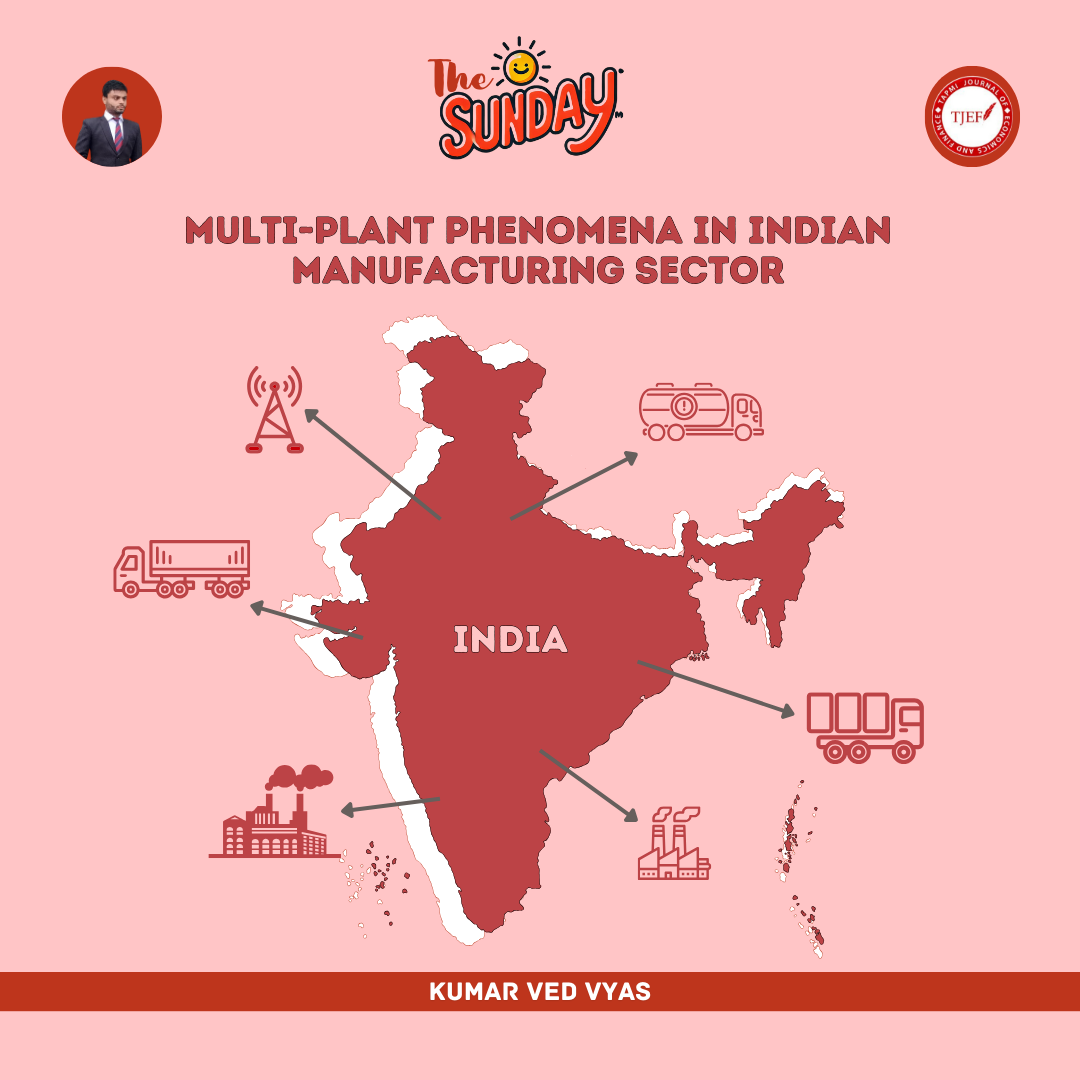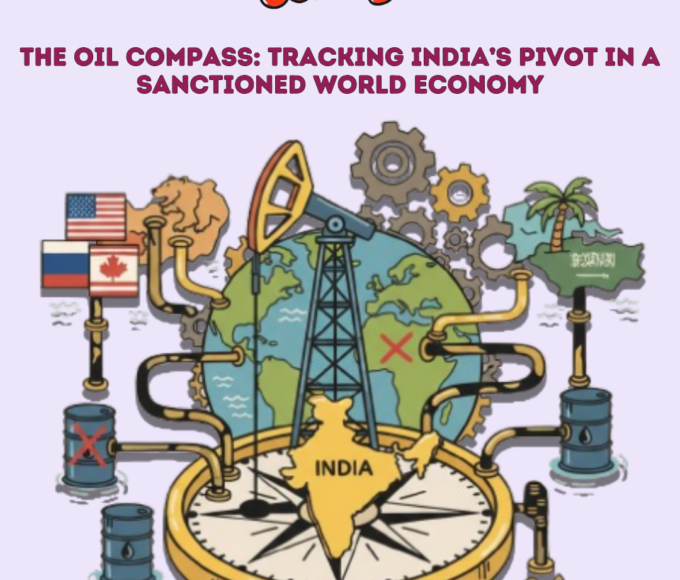Editor – Kumar Ved Vyas
The under-performance of Indian manufacturing sector and it’s lack of ability to compete is well established. Let alone China in segments like textile our manufacturing is unable to compete even with Bangladesh. There can be many reasons. A recent paper by former Chief Economic Advisor (CEA) Arvind Subramanium offers a fresh insight into the issue by examining the phenomena of multi-plants whereby a firm sets up multiple production facilities within a state rather than scaling up existing plant i.e single plant. This article explores the reasons and consequences of multi-plant phenomena on productivity and competitiveness of manufacturing sector with the example of the apparel industry.
Multi plant phenomena
The phenomena of multi-plants has been growing over time and is quantitatively significant, accounting today for over 25.16 percent of total employment in all plants and 35.48 percent of employment in large plants.
Since the law states that firms can file joint returns only if they have at least 2 plants (withing a state) each with 100-plus employees. The phenomenon of multi-plants will therefore only be meaningful for observed multi-plant sizes greater than 200 employees.
Today, multi-plants account for a small share of total plants (3.74 percent in 2022) but a large share of non-managerial employment (25.16 percent) and output (21.26 percent).
Significantly, the multi-plant phenomenon has expanded in scope over the last 2 decades. For example, in 2000, the share of multi-plants in non-managerial employment was 9.8 percent compared to 25.2 percent in 2022. In labor-intensive industries, the comparable numbers were 9.4 percent and 32.6 percent. Within labor-intensive industries, multi-plants now account for close to a third of non-managerial employment. Similar trends are evident in the share of multi-pants in total output.
Error in measurement
Because multi-plants are treated as single plants, errors are committed in understanding the true number of plants and in the distribution of employment. ASI (Annual survey of industries) data showed that that from 2000 t0 2022 number of plants have increased from 92732 to 136096, an increase of 47% plants but because of the multi-plant phenomena there is an error in these figures. Once we disaggregate the multi-plants, we find that the true numbers for 2020 and 2022 are 94382 and 145308, which is an increase of 54%.

This Aggregate picture doesn’t give us the distribution of error which is concentrated entirely in the plants which employ more than 200 employees as we can see from the table.
The phenomena of multi-plants leads to errors in the employment and output size distribution as well.Plant size distribution over time: “Observed” versus estimated “True”
The popular theory says that the size of plant since 2000s has increased because of supreme court decisions related to contract labor. Bigger firms which are 90th, 95th and 75th percentile have seen 43, 36 and 28 percent larger employment. But once we take into account the multi-plant phenomena we can see that these figure are overstated.
We find that between the early 2000s and the 2020s the observed (i.e. mismeasured) data suggests an increase in the right tail. However, when the mismeasurement is corrected, the increase is smaller and in some cases there is no real increase in the right tail and on some metrics there is even a shrinking of the right tail. These findings hold even more starkly for labor-intensive manufacturing.
In the following table we can see that for 95th percentile plants: the mismeasured data suggests that there was a 15 percent increase in the size of that plants but the corrected data suggests that there was no increase. The observed data show roughly a 50 percent increase in the size of top 100 plants. But the corrected data show that the size of the top 100 plants remained unchanged

When we measure the right tail in terms of employment shares, specifically shares above the 75th, 90th and 95th percentiles, our results are even stronger
In sum, we can conclude that ignoring multi-plants obscures and even misleads about the true evolution in the right tail: whether we measure the right tail in terms of firm size or employment shares, and using various thresholds, it seems that correcting for the bias and taking account of the fact of multi-plants, the right tail of large plants either stagnated or shrunk between the early 2000s and 2020s. Relatively large Indian plants did not become larger and did not account for a larger share of employment over two decades despite this being a period of dynamism over two decades and a veritable boom in the first decade.
Comparison with Bangladesh apparel sector
Over last 20 years in apparel sector Bangladesh’s market share soared from 2.5 percent to 8 percent while India’s has languished at 3 percent.
Many factors explain the diverging fortunes of the Indian and Bangladesh apparel sector but could plant size be one of them?
Following table compares plant size in india and Bangladesh.
It is striking how if we ignored multi-plants we would think that Indian plants were larger (compare column 1 and 3 in table 5) we would then be left with the puzzle of why Bangladesh is a more successful and competitive exporter and why Bangladeshi plants export on average 95 percent of their output compared to 37 percent for India.
But in fact there is no puzzle if we look for the right data (column 2 in Table 5) we find that Bangladeshi plants are consistently bigger at every threshold with the size differential rising as we go to higher thresholds for size.

In other words, a high and rising share of workers in Bangladesh work in large plants while in India they continue working in relatively small plants.
Contract Worker and Multi-Plant
Contractual labor has been rising as the preferred form of low level employment in government and private sector including manufacturing.
Intuitively we can assume that contract labor would be more prevalent in the labor-intensive manufacturing industry in order to overcome labor regulations. But what is striking is that this rise in contractualization has been mostly a feature of non-labor intensive industries. The share of` contract labor in labor-intensive industries have remained broadly flat at around 25-28 percent. The same trend is true in plants with greater than 200 workers but the levels are much greater: for example, in non-labor intensive sectors, the share of contractual workers reached 55 percent in 2022.

Following figure plots the share of contractual workers by employment size both for single and multi-plants. The striking feature is level of contract labor is more at every level than multi-plant.

On explanation is multi-plant units provide a higher level of flexibility for hiring and firing of workers and reallocation of workers from one plant to another.
In the case of a firm followed by the authors of the paper they were told by its CEO that in the event of say a drop in orders from one client that affects one plant, the firm can redeploy labor in another plant without having to terminate their employment which would be the only option in a single plant establishment. In other words, multi-plants and contract labor are both devices that increase flexibility but in different ways and for different situations and work as substitutes.
According to the CEO it would be more competitive internationally if its plant sizes could be greater. But it chooses not to grow as a matter of diversifying policy and legal risks and because of onerous regulations. The risks are not the law, per se, but stem from the broader political environment in which the firm feels it would be disadvantaged relative to the central government, to state governments where the plants are located, and also to labor in the event of any kind of labor-related dispute.
A dispute in a big plant would entail greater risks relative to that in a smaller plant: in extremis, shutting down a plant with five hundred employees is less costly than one with five thousand employees.
Risk spreading in a highly uncertain political environment is one reason why manufacturers chose not to become too big.
Whether this risk is seen as originating in democratic politics or in the broader operation of the law is unclear. Regardless, the consequence is that entrepreneurs choose to remain midgets to make widgets and choose to forego the benefits of scale and the attendant global export opportunities. Regulations—the creations of a precocious democracy preoccupied with protecting the weak against the strong and the small against the big—are therefore another reason why plants remain midgets.
Conclusion
Multi-plant phenomena has flown under the radar and its effect on efficiency, performance and competitiveness of manufacturing industry has been underestimated. The paper shed light on this phenomena and draws many important conclusion and insights.
The main findings are that once we correct our measurement to account for the multi-plant phenomenon, we find that over the 2 decades beginning this millennium–a period of overall economic dynamism–the right tail of the plant size distribution has stagnated or become smaller rather than bigger, and particularly so in labor intensive sectors.
Put simply, India’s large plants have not grown and may in fact have shrunk and importantly this has happened despite the sharp increase in contract workers.
Secondly having multiple plants (with fewer workers) is a mechanism–along with recourse to contract labor–for firms to endow themselves with greater flexibility either in response to economic or political shocks.
Though existence of Multi-plant has hampered performance of Indian manufacturing sec tor severely things have started changing lately with large single units with 10000 or more workers being established.
For the last 2 decades, however, these outcomes–midgets making-widgets despite overall dynamism– have been grim, a grimness obscured by incomplete and even faulty understanding of the data


















Leave a comment